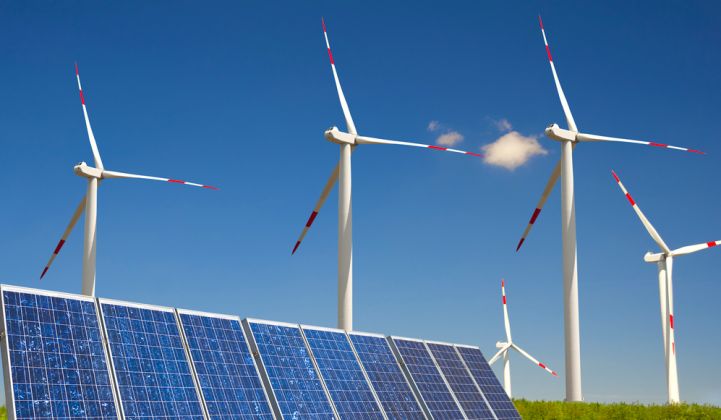For a few hours last weekend, on July 25, renewables accounted for 78 percent of Germany's power consumption -- surpassing the old record of 74 percent.
The new generation record was enabled by a combination of strong winds in the north, where most of Germany's wind turbines are installed, and sunny conditions in the south, where Germany has installed most of its solar. That's according to Craig Morris, an expert who writes about the country's energy transition.
The figures are preliminary. But assuming they're correct, solar and wind will have produced 40.65 gigawatts of power in Germany last Saturday. Adding biomass and hydropower, total renewable power generation reached 47.9 gigawatts. At that point in time, Germany's domestic peak power demand was 61.1 gigawatts.
Source: EnergyCharts.de (Expand)
While this is a significant achievement, Germany is still far from becoming a fully renewable-energy-powered country. The European industrial powerhouse still relies heavily on coal, which currently makes up more than 40 percent of Germany’s energy mix. Natural gas makes up roughly another 10 percent.
Some worry that Germany's push for renewable energy and transition away from nuclear is actually increasing the use of coal and lignite (a soft brownish coal). In November 2013, Bloomberg reported that Germany had fired up its first coal-fired power plant in eight years. According to the environmental group Deutsche Umwelthilfe, 10 new coal plants had either gone into service or were slated to go into service in 2013 or 2014.
But others say the link between Energiewende and the “coal comeback” is a myth. A report by Craig Morris and Arne Jungjohann showed that new coal projects in Germany were started between 2005-2007 when carbon credit prices were low and developers wanted to complete plants before pollution standards tightened.
Meanwhile, they found that growth in renewables more than replaced nuclear power over the past decade.

![]()
But Morris and Jungjohann also noted that coal isn't exactly in jeopardy.
"Renewables have only slightly cut into demand for electricity from fossil fuel. Mainly, power from natural gas has been offset, with hard coal going next based on fuel price in the merit order," according to the report. "Germany lacks specific policies to reduce lignite and increase natural gas use. Unless that changes, the market is unlikely to bring about a reduction in power production from lignite until the mid-2020s."
Germany's overall target is to increase renewables to 40 percent to 45 percent of overall generation by 2025 and 55 percent to 60 percent by 2035. While the 78 percent record was a one-time event, it is indicative of the progress Germany is making toward reaching its targets. On an annual basis, renewable energy makes up 28 percent of Germany's energy mix -- a significant achievement for a highly industrialized country.
Renewable energy generation remains strong even at times of high intermittency. On the night of July 22, for instance -- just a few days before the record-breaking day -- wind power dropped to 2 to 3 gigawatts and solar generation dropped to zero, Morris reported. But hydropower and biomass continued to generate 9.5 gigawatts out of an overall 40-gigawatt load. So even as solar and wind dropped off, renewables continued to supply about a quarter of Germany’s electricity demand.
Despite doomsday projections, Germany also survived a 2.5-hour solar eclipse earlier this year that dropped solar power output from 21.7 gigawatts to 6.2 gigawatts very quickly.
“These record-breaking days show that Germany has the the infrastructure and capacity in place [to handle large amounts of renewables], and to work toward making these outliers more feasible and happen on a regular basis,” said Roric McCorristin, program director for the Transatlantic Energy and Climate Network at the Heinrich Böll Foundation North America.
“The Energy Transition is a long-term project," he added. "But we see these record-breaking days as signs that it's working."




